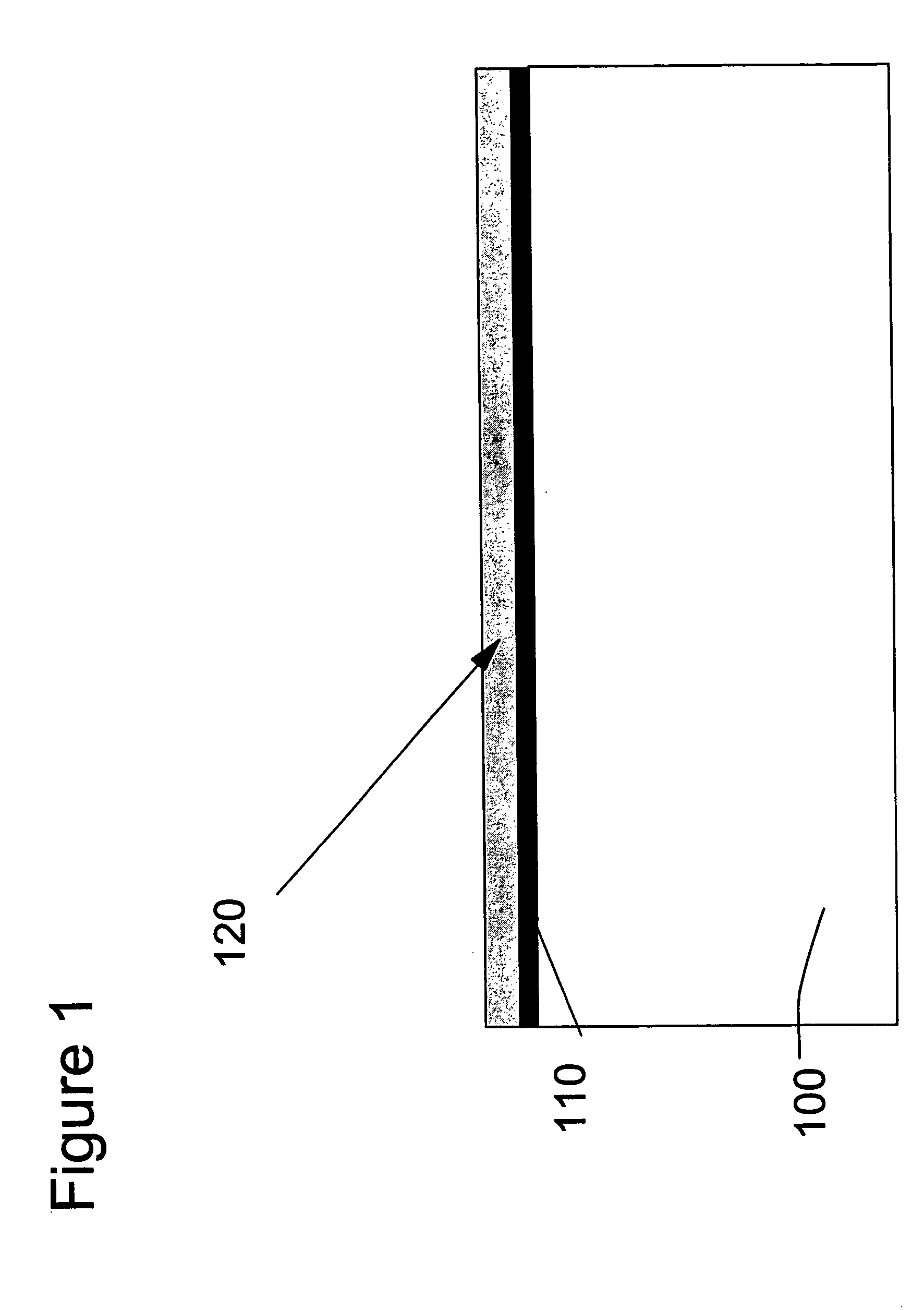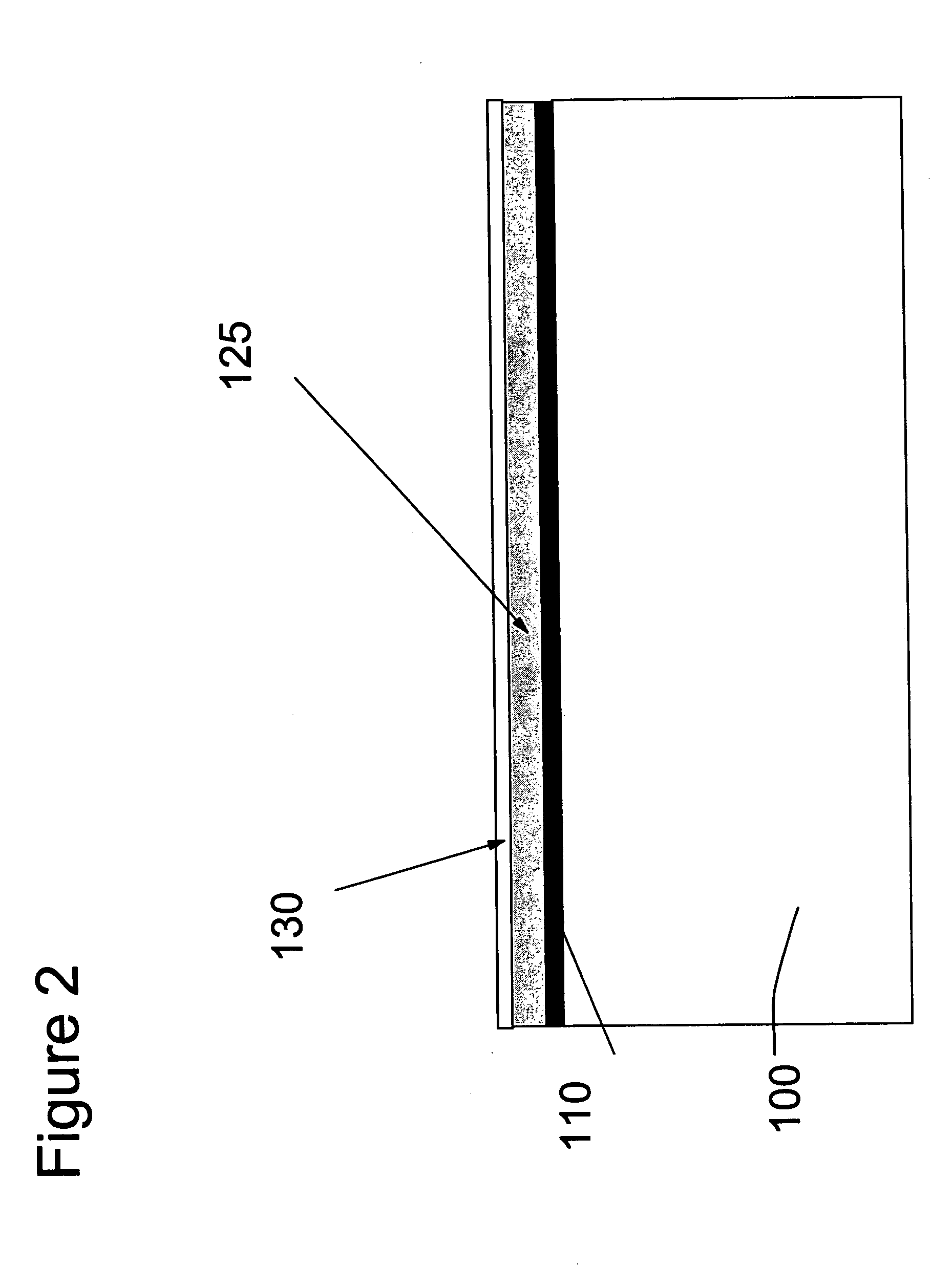Structure and method for ultra-small grain size polysilicon
a polysilicon and grain size technology, applied in semiconductor devices, chemical vapor deposition coatings, coatings, etc., can solve the problems of large resistance, increased polysilicon, and increased resistance, and achieve the effect of reducing polysilicon depletion and facilitating dopant diffusion
- Summary
- Abstract
- Description
- Claims
- Application Information
AI Technical Summary
Benefits of technology
Problems solved by technology
Method used
Image
Examples
second embodiment
[0048] Turning to FIG. 4, a second embodiment of the inventive method is shown.
[0049] Specifically, FIG. 4 illustrates a gate stack formed by the second embodiment in which the small grained polysilicon 125 of the first embodiment is replaced by a small-grained SiGe layer 425. In addition to the advantages of the first embodiment, this SiGe layer provides the additional advantage of better activation of the dopants (e.g., see Ozturk et al., International Workshop on Junction Technology, 2001, page 77).
[0050] More specifically, alternatively to the amorphous Si or the polysilicon for the first layer 125 in the first embodiment, the second embodiment of the present invention recognizes that it is also advantageous if SiGe is used for the thin layer 125. That is, SiGe is known to have better dopant activation than the small grained polysilicon, and the activation could be even higher for ultra-small (e.g., approximately 10-20 nm) grain poly-SiGe.
[0051] Hence, as shown in FIG. 4, the...
PUM
| Property | Measurement | Unit |
|---|---|---|
| grain size | aaaaa | aaaaa |
| thickness | aaaaa | aaaaa |
| temperature | aaaaa | aaaaa |
Abstract
Description
Claims
Application Information
 Login to View More
Login to View More - R&D
- Intellectual Property
- Life Sciences
- Materials
- Tech Scout
- Unparalleled Data Quality
- Higher Quality Content
- 60% Fewer Hallucinations
Browse by: Latest US Patents, China's latest patents, Technical Efficacy Thesaurus, Application Domain, Technology Topic, Popular Technical Reports.
© 2025 PatSnap. All rights reserved.Legal|Privacy policy|Modern Slavery Act Transparency Statement|Sitemap|About US| Contact US: help@patsnap.com



